 At 6:30 a.m. last Thursday we heard rallying chants from the military police gathering in Copa’s main plaza. Soon afterward, the roar of truck and bus engines broke the morning quiet. As they’d done since last Monday morning, the troops headed back up into the mountains to guard the road from La Paz.
At 6:30 a.m. last Thursday we heard rallying chants from the military police gathering in Copa’s main plaza. Soon afterward, the roar of truck and bus engines broke the morning quiet. As they’d done since last Monday morning, the troops headed back up into the mountains to guard the road from La Paz.
About two hours later loads of residents gathered in the plaza to salute a select delegation headed out to the lake – neutral territory where protesters couldn’t reach them – to try to hammer out a solution to the problem. The delegation included representatives from Copacabana, the peninsula’s four sectors, and Tiquina and Tito Yupanqui, the two villages vying for a bridge over Lake Titicaca connecting to La Paz, Copa, and millions of tourist dollars. The delegation was 100% male.
There were actually two different blockades. The first one, from March 25 to April 7, was mandated by the provincial government in protest over the rogue piracy of boat pilots who ferry people and vehicles across the Strait of Tiquina. By crossing at Tiquina, the 70-mile trip from La Paz takes about 3.5 hours. The pilots randomly raise rates, spontaneously strike, and take dangerous risks. One can avoid the strait by crossing into Perú, curving around the southern tip of the lake and re-entering Bolivia, for a 9-hour trip. So the other point of the first blockade was to demand a bridge be built over the Strait of Tiquina.
The second blockade, from April 8 to 12, was a counter-protest staged by the people of Tito Yupanqui. Someone might have foolishly promised them a triple-span bridge would land in their village, linking La Paz and Copa. That route would have lopped off a third of the time and distance between La Paz and Copa, and of course, it would have sky-rocketed tiny Tito Yupanqui’s economy. More likely the people of Tito Yupanqui saw foreign engineers conducting months-long feasibility studies, and concluded, wrongly, that the bridge would be theirs. Alas, the studies showed a triple bridge there would seriously harm the sacred lake, and would cost $600 million USD. When the first blockade was resolved with the decision to build a $200 million bridge at Tiquina, the people of Tito Yupanqui blamed Copacabana.
 of our differences.
of our differences.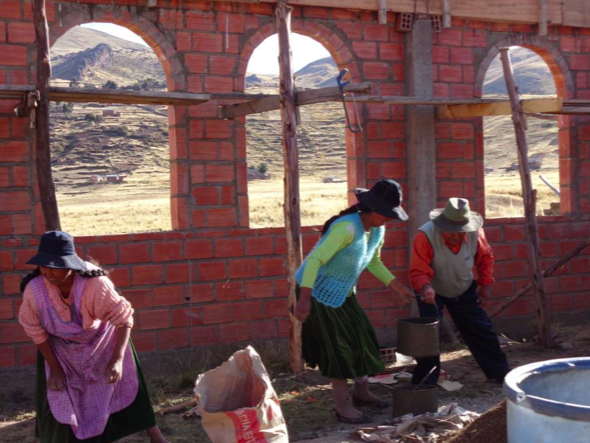
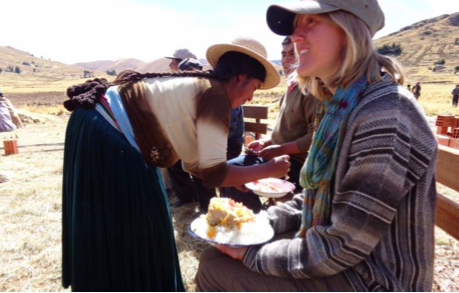 Located in the Huacuyo Valley, the church is about a half-hour, dusty, bumpy ride from Copa. The mixed crew of volunteers included little kids, a bevy of teenagers, the lay pastor and his wife who are in their late seventies, and a Catholic family with Methodist relatives. Valley residents are enthused about the new church and more than willing to help build it.
Located in the Huacuyo Valley, the church is about a half-hour, dusty, bumpy ride from Copa. The mixed crew of volunteers included little kids, a bevy of teenagers, the lay pastor and his wife who are in their late seventies, and a Catholic family with Methodist relatives. Valley residents are enthused about the new church and more than willing to help build it.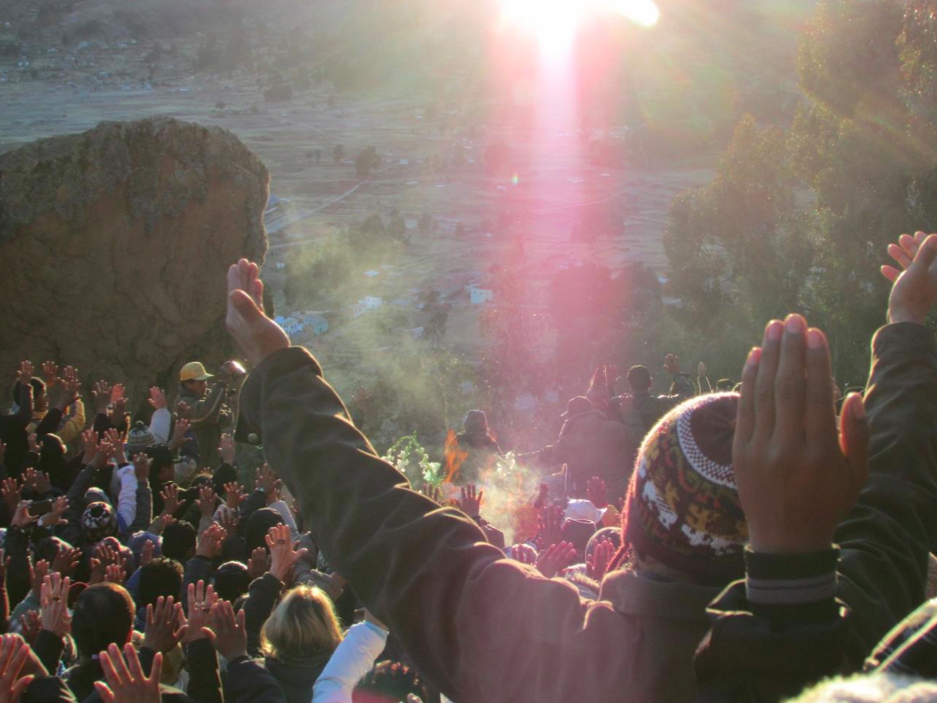

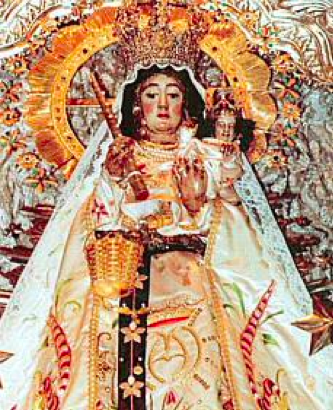 On April 22 just as the sun climbed over the eastern mountains, the Copacabana Cathedral bells rang frantically for nearly an hour, signaling a major crisis and summoning the entire town.
On April 22 just as the sun climbed over the eastern mountains, the Copacabana Cathedral bells rang frantically for nearly an hour, signaling a major crisis and summoning the entire town. At 6:30 a.m. last Thursday we heard rallying chants from the military police gathering in Copa’s main plaza. Soon afterward, the roar of truck and bus engines broke the morning quiet. As they’d done since last Monday morning, the troops headed back up into the mountains to guard the road from La Paz.
At 6:30 a.m. last Thursday we heard rallying chants from the military police gathering in Copa’s main plaza. Soon afterward, the roar of truck and bus engines broke the morning quiet. As they’d done since last Monday morning, the troops headed back up into the mountains to guard the road from La Paz.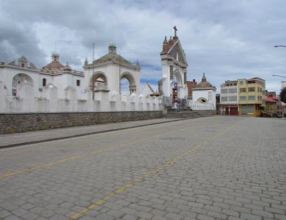 For more than half a millennium Copacabana has drawn thousands of South American, especially Bolivian, Catholic pilgrims during Holy Week. They come to worship at the world-famous Cathedral, to seek blessings and favors from the Virgin of Copacabana, and to climb Calvario – some on their knees – praying at the Stations of the Cross on the way up (more on this a bit later). Last year, our little village, population 8,000, hosted 40,000 pilgrims.
For more than half a millennium Copacabana has drawn thousands of South American, especially Bolivian, Catholic pilgrims during Holy Week. They come to worship at the world-famous Cathedral, to seek blessings and favors from the Virgin of Copacabana, and to climb Calvario – some on their knees – praying at the Stations of the Cross on the way up (more on this a bit later). Last year, our little village, population 8,000, hosted 40,000 pilgrims.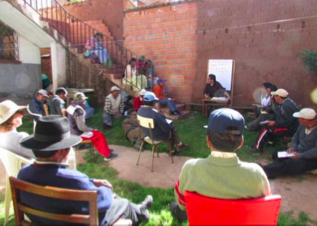 Last week was fun, busy and tiring. Pastor Orlando Moller, a United Methodist Pastor and dual citizen of Bolivia and the US, led a three- day theological course for about 40 regional church leaders – a few came from as far away as Oruro, about a 9 hour bus ride. Bishop Javier Rojas came from La Paz for the kick-off. Unfortunately, due to health problems with the District Coordinator in Perú, none of the Peruvian church leaders were able to attend.
Last week was fun, busy and tiring. Pastor Orlando Moller, a United Methodist Pastor and dual citizen of Bolivia and the US, led a three- day theological course for about 40 regional church leaders – a few came from as far away as Oruro, about a 9 hour bus ride. Bishop Javier Rojas came from La Paz for the kick-off. Unfortunately, due to health problems with the District Coordinator in Perú, none of the Peruvian church leaders were able to attend. Early this week Jeff went to La Paz to meet Pastor Orlando Moller, a citizen of the U.S. and Bolivia, who’s here to lead a three-day seminary course for Titicaca-area pastors and church leaders.
Early this week Jeff went to La Paz to meet Pastor Orlando Moller, a citizen of the U.S. and Bolivia, who’s here to lead a three-day seminary course for Titicaca-area pastors and church leaders.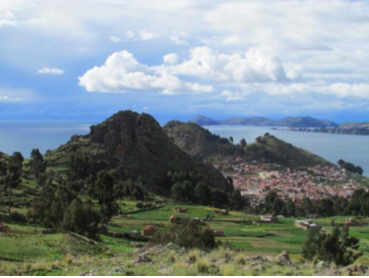 Friday afternoon we knocked off work early, grabbed the camera, and left home at little after 4, aiming to hike a pre-Columbian road winding through a mountain pass above Copacabana. Such magnificent sites just had to be shared ...
Friday afternoon we knocked off work early, grabbed the camera, and left home at little after 4, aiming to hike a pre-Columbian road winding through a mountain pass above Copacabana. Such magnificent sites just had to be shared ...
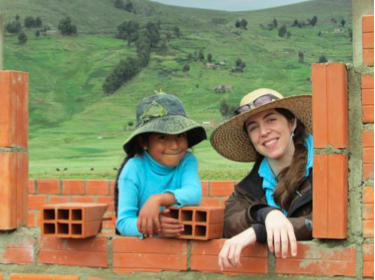 Katie Yaun, a new UMVIM volunteer, has been visiting for the past 10 days, meeting neighbors and people she’ll be working with, and scouting out the area in advance of her long-term move here in several more weeks. Katie will be working with Misión Fronteras for about 9 months, launching and directing the new Teach the Teachers Program to improve English language skills throughout the region.
Katie Yaun, a new UMVIM volunteer, has been visiting for the past 10 days, meeting neighbors and people she’ll be working with, and scouting out the area in advance of her long-term move here in several more weeks. Katie will be working with Misión Fronteras for about 9 months, launching and directing the new Teach the Teachers Program to improve English language skills throughout the region.





